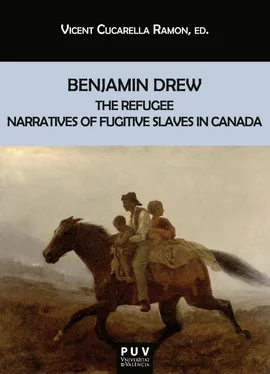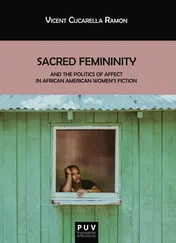The peace treaty between France and England in 1760 authenticated the perpetuation of slavery in Québec under the English regime (Trudel 124-142). Yet, by 1800, slavery was rendered unrealizable in Lower Canada. However, prior to that achievement, slave numbers increased when Loyalists arrived with their slaves around 1783. The escape of Loyalists, mainly to Nova Scotia, produced a historical document that “offers us the richest collection of recorded statements by black subjects at the time, at a moment when they were about to become Nova Scotians” (Siemerling 36). Tellingly, the “Book of Negroes”, that represents a milestone in the history of Black Canadians, is an account book created in two versions by British and United States officials in 1783 which includes the names of three thousand Black subjects evacuated from New York in 1783 on an array of ships that were bound for Québec, England, Germany and, primordially, for Nova Scotia. Above all, the “Book of Negroes” represents the testimony of Black individuals that eventually became Canadian citizens. In other words, it is a Black Canadian text that can be seen as a collection of Black testimonies or “an anthology of embryonic slave narratives” (Siemerling 37). What is more, due to the cross-border nature of these Black people’s flight, the ledger constitutes the seed of transnational Black Canadian writing. 4Another specific and important aspect with regard to the “Book of Negroes” is that it contains relevant information about masters and their slaves moving up north. In fact, many entries in the book openly reveal stories of persistent slavery in Canada.
In his article “Black Loyalists and Black Slaves in Maritime Canada” (2007), Harvey Armani Whitfield delves into the history of Black Loyalists and explains how the Blacks who arrived in Nova Scotia “were among the twelve hundred to two thousand slaves brought by Loyalists to Canada” (1981). 5For the historian, “the typical experience of black migrants to the Maritimes after the Revolutionary War was not freedom, but slavery, re-enslavement, and other brutal forms of indentured servitude” (1891). 6Yet, by the late eighteenth century and spurred by different defeats, the British interest in Black people changed and after the American Revolutionary War was “related to contexts and developments that also helped prepare the ground for English abolitionism in the 1780s” (Siemerling 64). Nova Scotia became a relevant site for those new and longer forms of Black testimony that included most notably the slave narrative as a literary testimony. Nova Scotia emerges, in this way, connected to several eighteenth-century slave and captivity narratives, written by Black community leaders who described the province in their memoirs or eventually took up residence there.
One of these well-received Black Nova Scotian narratives was A Narrative of the Lord’s Wonderful Dealings with John Marrant, a Black by Methodist minister John Marrant, which was published in 1785. Among the circumstances that fostered the drive of British abolitionism, Siemerling includes “Mansfield’s 1772 decision against slavery on English soil, the 1775 Dunmore Proclamation promising freedom for black support in the American war, and the need, after the humbling British defeat against slaveholding colonies, to consolidate a battered national self-image through moral superiority” (64-65). Certainly, the weight on morality and religious conscience played an important part in rethinking the political image and attitude of England and the British Empire. Cassandra Pybus argues that “material benefit might be sacrificed for moral satisfaction” and this, beyond a doubt, signals a “significant shift in British thinking” (105). A fact of utmost importance was that British intellectuals had come “to an intensified selfscrutiny about the imperial enterprise, in which complicity in slavery was seen to have sullied the moral character of the nation” (Pybus 105).
Under these new perspectives, Granville Sharp took part in the Committee for the Relief of the Black Poor, which was founded in 1786 in response to the noticeable poverty and suffering of those Black former partners in the war who found themselves rising in numbers in London. It is precisely in this very context that a plan to find a settlement in Sierra Leone to alleviate their situation originated (Pybus 2006, 105–19). Indeed, “important chapters like the evacuation of blacks to Nova Scotia, as well as their subsequent part in the story of the ‘Province of Freedom’ of Sierra Leone, can be understood in the light of genuine British support for black subjects and humanitarian philanthropy” (Siemerling 66). These movements were also a reaction to a pressing need for moral capital after the lost war and the humiliating 1783 Treaty of Paris. All these developments helped to prepare the ground for the ensuing Underground Railroad, and they also informed the course of Canada during the nineteenth century, making the country an important site of Black experience and cultural expression. Despite the frequent racist realities that Black people had to endure in eighteenth-century Nova Scotia and nineteenth-century Upper Canada alike, this new context of a more nuanced humanitarian stance paved the way for the emergence of Canada’s boastful selfimage as a compassionate Black Canaan.
The Arrival of Fugitive Slaves (1820-1860): Loyalty, Suspicion and Writing in Victorian Canada
Prior to the establishment of the Fugitive Slave Act (1850), which prompted a massive escape of slaves to Canada, Black escapees had already decided to flee the United Sates and to move away from slavery. By the end of 1820 and well into 1830, fugitive slaves started to cross the border toward British North America on their own and were rather well received. However, by 1850, both Canada West and Nova Scotia, the two major centers of Black settlement, had established separate educational systems in order to preserve the alleged assumption of equality of opportunity while, at the same time, slowing cultural assimilation. The difference harbored in these thirty years must be understood taking into account the uneven development of Black-white relationships in Canada. A look at the difficulties and obstacles that fugitives encountered alongside Canadian territory exposes the multifarious ways in which Black people fought, metaphorically and literally, to make a living out of Canadian soil.
When the first fugitive slaves arrived in Upper Canada, they generally stopped near the border following a strategic move. Since they had no funds, they could not move freely and deeply into the interior of the country and so, as exiles, they wished to remain close to the frontier hoping for an early return. In Blacks in Canada: A History , Robin Winks explains that
Small knots of Negroes settled at Welland and St. Catherines, back from the Niagara River; at Colchester, Windsor, and Amherstburg, opposite Detroit; near London, Chatham, and Dresden, in the center of the long peninsula of fertile lands that dipped south against Lake Erie almost to the latitude of New York City; and more slowly in Toronto, Oro, and in the Queen’s Bush (144).
On the eastern end of the peninsula Blacks found employment and acceptance to the extent that during the 1830s and well into 1840s many of the waiters in the hotels near the area of Niagara Falls were Black people. Even “travellers to the area agreed that Negroes could have steady employment and access to land as fertile as any settlers occupied” (Winks, Blacks in Canada 146). Their acceptance went so well that they also made it much further afield and began to settle in their own segregated communities to the degree that small communities of Blacks were spread throughout Canada West. They slowly got established throughout British North America, from St. John’s, Newfoundland, to Victoria, Vancouver Island, around Halifax and southwards, and near Guysborough and Amherst, in Nova Scotia, around Lake Otnabog in New Brunswick, and in Montreal. Yet, the largest body of Blacks lived in Canada West.
Читать дальше











![Benjamin Franklin - Memoirs of Benjamin Franklin; Written by Himself. [Vol. 2 of 2]](/books/747975/benjamin-franklin-memoirs-of-benjamin-franklin-wr-thumb.webp)
![Benjamin Franklin - Memoirs of Benjamin Franklin; Written by Himself. [Vol. 1 of 2]](/books/748053/benjamin-franklin-memoirs-of-benjamin-franklin-wr-thumb.webp)